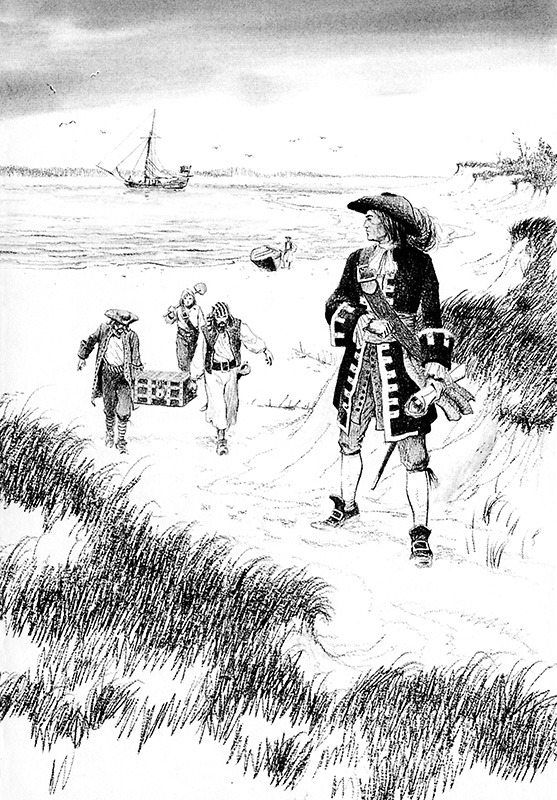Captain William Kidd was a pirate. Everyone knows that, don’t they?
A.B.C. Whipple’s book, The Mysterious Voyage of Captain Kidd, is written from a different perspective. From the beginning, Whipple draws a map of conspiracy, greed, government corruption, and bad luck.
Whipple is careful to define the difference between piracy and privateering. Piracy is lawless thievery. Privateering is government-sanctioned capture, either of pirate ships or of ships from a country a captain’s country is at war with. Privateers sailed with official papers from the country that sponsored their voyage to avoid capture by their own countrymen.
Captain Kidd was commissioned to capture pirates and, as Britain was perpetually at war with France, he was also authorized to capture French ships. This type of venture could be extremely profitable for everyone involved in the voyage, from the financial backers to individual sailors, as each of them would receive some percentage of the take. But somehow, Kidd was able to sail for months in pirate-infested waters and never encounter a pirate. This meant the crew was away from home working for nothing.
There seems always to be a risk of mutiny when sailors get too discontent. What’s a captain to do when his crew rebels in the middle of the ocean thousands of miles from home? And whose testimony will be believed if the matter comes to trial. Typically, the captain’s. But what if the crew has burned his meticulously kept ship’s log? And what if crew members have been bribed with their lives to lie?
Captain Kidd’s voyage began in 1696, long before the American Revolution. The Colonies were still governed by Britain. British press gangs who kidnaped men and forced them into the British navy were rampant on the seas. What’s a captain to do when sailors from his own country board his ship and take all of his best crew members? Shorthanded in the middle of the ocean thousands of miles from home would be a difficult predicament.

After more than three years at sea, Captain Kid returned home to discover that he had been declared a pirate. In an attempt at some sort of insurance for his life, he buried treasure along the way. But how much and where? People have wondered and searched ever since.
As might be expected in a book about pirates, some people in the story do die, but there are no graphic descriptions. It isn’t really a spoiler to say that Captain Kidd is hanged in the end. The injustice of it is troubling, but the event is not described in graphic detail.
The Mysterious Voyage of Captain Kidd was part of the Landmark Book series that was published between 1950 and 1970. For more information about Landmark Books, see biblioguides.com.
This particular book in the Landmark series has been scarce, therefore, expensive for many years. It has now been beautifully reprinted by Purple House Press. It is available in paperback and hardcover, both reasonably priced so everyone can enjoy it again.
Jill Morgan, of Purple House Press, thoughtfully chooses which books to reprint and does extensive research on the authors, the stories, and their publication history. In her generous “Publisher’s Note” for Captain Kidd, she shares some interesting updates to the story, such as the discovery of a sunken ship and how to find treasure maps.